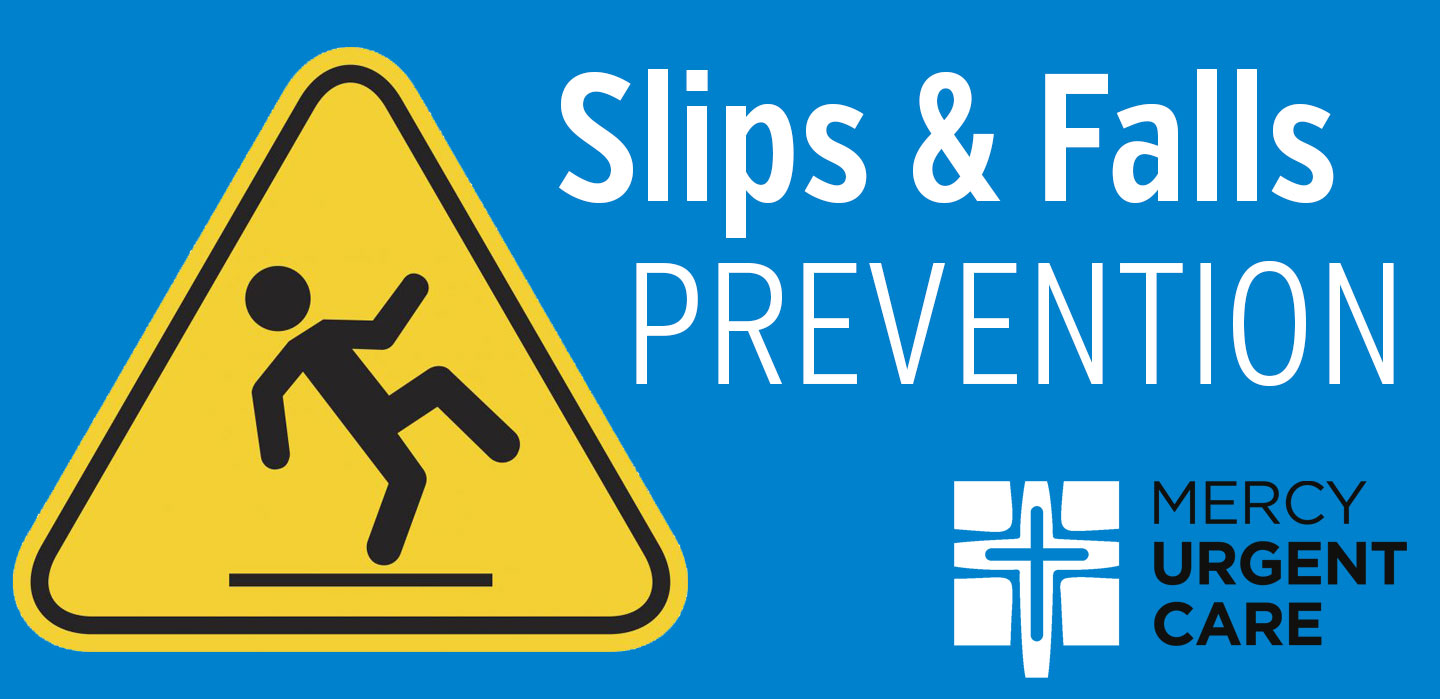Slips & Falls

December 12, 2022 by Keely Knopp
When winter weather comes howling at your company’s door, hazardous situations increase the risk of injury for employees in any field. In fact, slips, trips, and falls in the workplace cause nearly 700 fatalities per year, with many more injurious accidents reported.
More than one million Americans seek treatment for slip-and-fall injuries each year, with numbers dramatically increasing during the winter months due to snow, ice and holiday hustle. According to the National Safety Council, slips and falls are the leading cause of lost days from work.
To help you protect employees from slip-and-fall accidents at work, we’ve outlined a few tips below.
- Recognize and evaluate the hazard. Identify any surfaces where slips may occur, and warn employees of the potential hazard. Check walkways for ice after severe weather or when temperatures are at or below freezing, and be aware that employees may also track water inside with wet or snowy footwear.
- Control the hazard. If ice has accumulated along a workplace walkway or parking area, add barriers around the ice to warn employees and call attention to the hazard. When possible, de-ice or salt walkways to control ice accumulation ahead of winter storms or freezing temperatures. If these conditions do occur, consider providing employees with additional protective equipment or train employees specifically on procedures for icy conditions.
- Communicate safety procedures to employees. Instruct workers to avoid icy sidewalks and other slick surfaces when possible, and ask that they heed the following precautions:
- Wear shoes with thick-treaded rubber or neoprene soles when walking on icy surfaces and prop yourself up by using a walking stick or gripping walls or handrails where applicable.
- On ice, learn the penguin walk: Feet apart, knees slightly bent, arms out for balance — and take slow, shuffling steps.
- Be extra cautious on smooth surfaces, such as newly waxed floors.
- Clean up or report spills right away.
- Ensure that you can see where you’re walking. Don’t carry loads you cannot see over.
- Properly maintain walking areas and keep them lit and free of clutter.
- Don’t jump off of landings or loading docks. Use the stairs.
- Repair or replace loose or broken stairs and handrails.
- If a fall is inevitable, minimize impact by leaning forward, bending the elbows and knees and relaxing your muscles. Try to break the fall with your thigh, hip or shoulder, as bones in the arms, wrists and knees are easier to fracture — and protect your head from hitting the ground.
Unfortunately slips, trips and falls aren’t completely unavoidable, but when they do occur, Mercy Urgent Care is here to help with treatment.
Sources: National Safety Council, National Floor Safety Institute

